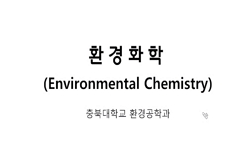<P><B>Abstract</B></P> <P>In this study, real thin-film transistor liquid-crystal display wastewater with an initial chemical oxygen demand (COD) concentration of 1348.00 ppm was treated using chitosan-coated bentonite (...
http://chineseinput.net/에서 pinyin(병음)방식으로 중국어를 변환할 수 있습니다.
변환된 중국어를 복사하여 사용하시면 됩니다.
- 中文 을 입력하시려면 zhongwen을 입력하시고 space를누르시면됩니다.
- 北京 을 입력하시려면 beijing을 입력하시고 space를 누르시면 됩니다.


Removal of chemical oxygen demand from thin-film transistor liquid-crystal display wastewater using chitosan-coated bentonite: Isotherm, kinetics and optimization studies
한글로보기https://www.riss.kr/link?id=A107706147
- 저자
- 발행기관
- 학술지명
- 권호사항
-
발행연도
2018
-
작성언어
-
- 주제어
-
등재정보
SCOPUS,SCIE
-
자료형태
학술저널
-
수록면
145-154(10쪽)
- 제공처
-
0
상세조회 -
0
다운로드
부가정보
다국어 초록 (Multilingual Abstract)
<P><B>Abstract</B></P> <P>In this study, real thin-film transistor liquid-crystal display wastewater with an initial chemical oxygen demand (COD) concentration of 1348.00 ppm was treated using chitosan-coated bentonite (CCB). Characterization analysis of the CCB adsorbent was performed using Brunauer-Emmett-Teller surface area analysis, scanning electron microscopy, and Fourier-transform infrared spectrometer. The effect of parameters such as contact time, CCB dosage, pH and temperature on the COD removal was examined. Results show that increasing the contact time and CCB dosage increases COD removal efficiency while no considerable change was observed in removal efficiency with varying temperature and pH. Adsorption experiments showed that the removal of COD using CCB best fits the Langmuir isotherm (<I>R</I> <SUP> <I>2</I> </SUP> ≥ 0.9821) while kinetic data was best described by the pseudo-second order equation (<I>R</I> <SUP> <I>2</I> </SUP> ≥ 0.9980), which implies that chemisorption is the rate-determining step. Thermodynamic studies revealed that adsorption of COD onto CCB was spontaneous, exothermic (ΔH° = 5.95 kJ/mol) and decreased randomness in the system (ΔS° = -0.88 J/mol·K). Optimization studies using response surface methodology with central composite design was performed to determine the operating parameters that would yield the maximum COD removal. It was determined that the optimum conditions of 20.32 h, 0.8 g CCB, pH 4.0, and 30 °C would yield a maximum removal of COD of 73.34%.</P> <P><B>Highlights</B></P> <P> <UL> <LI> COD removal using CCB is spontaneous, exothermic and results to low disorder. </LI> <LI> Maximum COD removal of 73.34% from TFT-LCD wastewater using CCB is attained. </LI> <LI> CCB mass is the most significant factor affecting COD removal from wastewater. </LI> </UL> </P>




 ScienceON
ScienceON






